
A love of the primrose is part and parcel of being English. And I am half-English. My mother came from the southwestern part of England, where primroses (Primula vulgaris) once grew in abundance. Stitched into the floral tapestry of damp meadows and tucked among the roots of trees, the pale yellow flowers were familiar to every country child of my mother’s generation. Today, due to increasing development of their natural habitat, primroses are fewer in number. But these spring wildflowers still hold gentle sway over Britons of all ages.
Sadly, my mother died before I began working on my primrose garden, and her American springs remained primrose-less. However, her vivid descriptions of home and of this beloved flower made a lasting impression on me. Sight unseen, it had cast a spell on me. Upon meeting my first wild primrose in Yorkshire, England, many years later, I was overcome with nostalgia.
Since that time, I have discovered a vast world of primroses. There are more than 400 species of Primula distributed all over the world, primarily in the Northern Hemisphere. Although my mother never imagined the richness of this large genus, she would have been thrilled by its beauty and variety.
Primrose at a glance
Primula spp.
PRIM-u-la
- Extremely large genus of more than 400 species of mostly low-growing, herbaceous perennials. Botanists break down this vast group into different sections and subsections.
- Primrose species grow in many varied locations from wet to dry and sun to shade. The primroses mentioned in this article prefer cool climates, are hardy in USDA Hardiness Zones 4 to 8, and thrive in humus-rich woodland sites.
- Some species bloom in late winter, most flower in early spring, and some in late spring. Blossoms may appear singly or grouped in clusters, spires, balls, or tiers.
- Divide primroses in late spring, after they flower, or sow seed in late winter.
English primroses thrive in American soil
In England and Europe, primroses, along with their close relations, cowslips and oxlips, bloom in March. All three are yellow-flowered and were considered to be variations of a single species by Linnaeus, the Swedish naturalist who devised our modern classification system. Later, botanists assigned a discrete specific name to each.
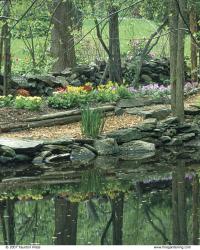
Photo/Illustration: Linda Wesley


The common primrose with its dainty single blossoms, each balanced on a 6-inch stem, became P. vulgaris; the cowslip, bearing umbels of little bright-yellow flowers, P. veris; and the oxlip, with one-sided clusters of larger moonlight-yellow blossoms, P. elatior. In my Connecticut garden, this important trio blooms in mid-to-late April. For sentimental reasons, they will always be my favorites. They are also among the most enduring, long-lived primroses I know.
Other species bloom before them, some follow them, and others flower with them. The most colorful moment is when primroses, cowslips, and oxlips weave a yellow ribbon through patches of pink, purple, mauve, blue, and white provided by other primroses and native wildflowers. From early March until the end of May, there are primroses in bloom on either side of the narrow woodland path that circles my vernal pool (photo, below on left).
Woodlanders from Europe and Japan are easy to grow
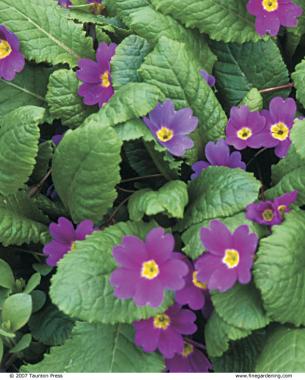
Photo/Illustration: Linda Wesley
I was plunged into the wider world of primroses when I joined the North American Rock Garden Society in 1978. I was a complete neophyte, but fortunately, H. Lincoln Foster and his wife, Laura Louise, were at their most active then. Gifted gardeners and much sought after by the cognoscenti, the Fosters were also enormously kind to beginners. From this extraordinary pair and from the example of their memorable garden, I learned which members of the primrose clan were most forgiving of our hot, dry summers, cold and often snowless winters, and unpredictable weather all year.
Among my first gifts from the Fosters were cultivars of P. vulgaris (USDA Hardiness Zones 4 to 8), like ‘Millstream White’, raised from crosses that Linc had made himself. Linc also gave me a large clump of P. abschasica (Zones 3 to 8), grown from seed he had received from the Leningrad Botanical Garden (photo above). It is a shame that this wonderful plant is not available commercially, because it is tough, reliable, and has the welcome habit of opening its red-purple flowers as soon as the snow melts, sometimes as early as the end of February. If you belong to the North American Rock Garden Society or the American Primrose Society, you can sometimes find divisions offered at plant sales.
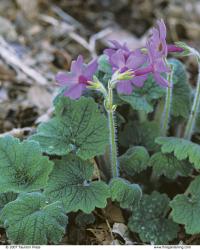
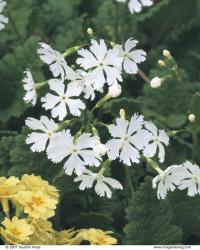
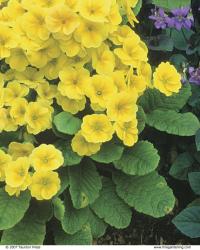
Photo/Illustration: Linda Wesley
In 1980, the Fosters came down from their mountainside in Falls Village, Connecticut, to see how my woodland garden was progressing. At this time, they brought me a Japanese species, P. kisoana (Zones 2 to 8), with silky stems and clusters of pink flowers. This interesting plant increases by hairlike underground runners and quickly forms sizeable patches in my humus-rich soil. Like the other primroses the Fosters recommended, P. kisoana is a long-lived, vigorous species and more tolerant of our hot, dry summers than most.
Another easy woodland species from Japan that rewards beginners with success is P. sieboldii (Zones 3 to 8). This primrose copes with summer by going dormant (photo below in the middle). After it flowers, in mid-May, the longstemmed, oval leaves, with their pretty, scalloped edges, disappear. But the following spring, masses of small rhizomes lying just beneath the soil surface send up rapidly increasing swaths of foliage and 12-inch flower stalks. These are topped by whorls of pink, white, purple, or mauve blossoms.
The Polyanthus group of primroses, with their sturdy stalks and dense umbels of flowers, are a tribute to the hybridizer’s art. They are assumed to have arisen from crosses between P. vulgaris and P. veris. And they look perfectly at home growing side-by-side with their parents and other wildflowers (photo below on right). These primroses are hardy and easy to grow, and while they do need division every three years, they are worth it for the marvelous range of colors they bring to the garden: deep garnet-red to purple, rich butter-yellow to white, and heavenly shades of blue and pink.
Water-lovers thrive at the edge of a pond or stream
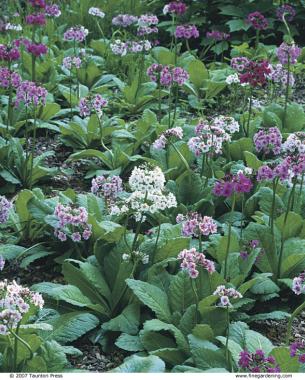
The drumstick primrose (P. denticulata) (Zones 2 to 8) from the Himalayas and the water-loving Japanese primrose (P. japonica) (Zones 3 to 8) round out my list of dependable, long-lived primroses. Both species adapt readily to life in the Northeast and self-sow, the latter with abandon. The drumstick primrose is an early bloomer—March in my garden. Its characteristic balls of mauve, lavender, and reddish-purple flowers often begin to open before the stems have achieved more than an inch or two in height. Ultimately, the stems reach 15 inches. While not true water-lovers, drumstick primroses do need moist, humus-rich soil in order to flourish.
The Japanese primroses demand a wet site. They self-sow in the stream bed in my woodland garden and are unfazed by total submersion for brief periods in the spring (photo above). In mid-May, they lift tiers of candelabra flowers on 18-inch stems above rosettes of lush foliage. The flowers come in lovely shades of red, magenta, and pink. Although there is also a white form, I like the richly colored ones best, and so do the hummingbirds.
Primroses need moisture and rich soil
The sine qua non of growing primroses is humus-rich soil. When I plant them or divide them, I take considerable pains with the soil. Mine is womanmade from rotted leaves, aged cow manure, and as much homemade compost as I can spare. In addition, the primroses are heavily mulched with chopped leaves. The organic matter in the soil holds moisture, and the mulch prevents it from evaporating.
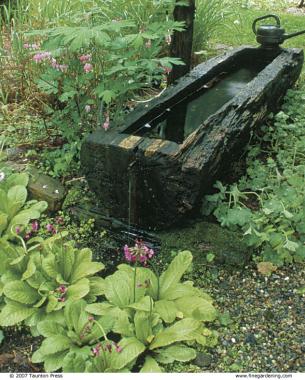
Photo/Illustration: Linda Wesley
Given our hot, often dry summers, afternoon shade is also a must for primroses. In England and Europe, primroses often grow in open fields beneath scudding clouds and fitful sunshine. Here, as the sun is stronger and the temperature warmer, the same primroses require protection. But with a bit of shade, they can put up with our less-than-ideal climate.
Drought, far more than cold, is the enemy where all primroses are concerned. If there is a downside to growing these enchanting flowers, it is that they languish even during an ordinary Connecticut summer. Unless you can water regularly—an inch a week—your primroses will look ratty during July and August. Mine always do.
Pests or diseases rarely bother my primroses. Some gardeners report trouble with spider mites during hot, dry weather. Deer do browse on them, and slugs can damage leaves during a wet summer. The tattered foliage can be removed, and plants will put on new growth in fall.
Sow primrose seed in winter
The easiest primroses to grow from seed include garden polyanthus hybrids, P. vulgaris , P. veris , P. elatior , and several species of candelabra primroses, including P. japonica . Consult Rock Gardening: A Guide to Growing Alpines and Other Wildflowers in the American Garden by H. Lincoln Foster for other species that are easy to grow from seed.
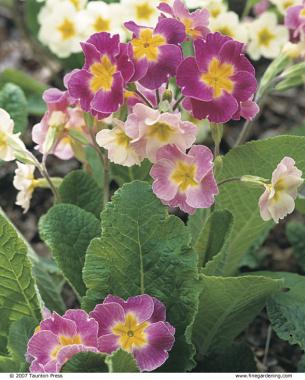
Seeds can be sown anytime from January to the end of March. Fill small pots with a moist seed-starting mix, like Pro-Mix, to within 14 inch of the top. Then sow seeds sparsely and cover them with a thin layer of vermiculite. Put the pots outside, exposed to the weather, but on the north side of a building or under shrubs for protection from wind and the winter sun. Cover the pots with an old window screen to break the force of driving rain. Otherwise, they require no winter care.
The seeds will germinate in March or April, depending on when they were sown. To water seedlings once they have germinated, set pots in a shallow pan and fill the pan with an inch of water. When the soil surface in the pots is damp, take them out of the pan and allow them to drain. Never let the seedlings dry out. Once the seedlings have true leaves, transplant them to flats filled with potting soil. Remove a whole clump from its pot, gently tease apart the roots, and place the individual seedlings an inch apart in the flat. Later, set small plants in a nursery bed, and finally, move them into the garden in early fall.
Mulch with chopped leaves and water the young plants. When the ground freezes, cover them with evergreen boughs to keep them shaded and the ground frozen to prevent frost heave. They will bloom modestly the following spring and generously the next year. Happy spring!
Plant primroses near a path

Photo/Illustration: Amy Rapaport
A charming old lady, whom I knew only through correspondence, once wrote me the following: “I was given a clump of hose-in-hose primroses more than 40 years ago. Now, I am 93 and handicapped, but my primroses continue to give me joy. From my desk, I can see a row of them in a little courtyard garden. I watch eagerly for the first sign of them in the spring and enjoy at least six weeks of pleasure. Then, I look forward to their coming again the following year.”
Such is the power of the primrose. It is hard to imagine more pleasure for less work. Though my elderly friend could no longer tend her primroses, they continued to flourish. They are possessed of an ethereal beauty that belies their hardiness—blooming early and so faithfully. In her sheltered courtyard garden, they grew at the foot of shrubs. I have also enjoyed seeing them grown under apple trees, and they are perfect for a woodland garden. Primroses are best appreciated right at your feet, where you can enjoy their perfection at close range.
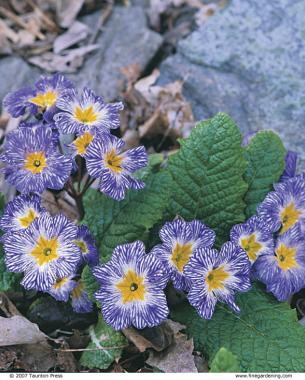

My garden has no great drifts of primroses, rather clumps and patches, as they might grow in the wild. And beautiful as they are by themselves, primroses seem more at home in the company of other flowers. I think they are at their very best with plants of similar temperament and comparable delicacy, like our native wildflowers: violets (Viola spp.), crested iris (Iris cristata), trilliums (Trillium spp.), Virginia bluebells (Mertensia virginica), woodland phlox (Phlox divaricata), bloodroot (Sanguinaria canadensis), twinleaf (Jeffersonia diphylla), woodpoppy (Stylophorum diphyllum), Dutchman’s britches (Dicentra cucullaria), and ferns.
Unlike my mother, I always adored the local flora and the uncouth landscape of my Connecticut childhood. I found nothing wanting in an American spring, and I still feel that way. But I could no longer bear a spring without primroses. They have it all: beauty, ease of culture, and early bloom. To me, primroses are also the flowers of sentiment, keeping forever fresh memories of my English mother
More from Sydney Eddison…
Fine Gardening Recommended Products

Spearhead Shade Gardening Shovel with Steel-Reinforced Fiberglass Handle
Fine Gardening receives a commission for items purchased through links on this site, including Amazon Associates and other affiliate advertising programs.

Plant Covers Freeze Protection 10 ft x 30 ft Floating Row Cover 0.9oz/yd²
Fine Gardening receives a commission for items purchased through links on this site, including Amazon Associates and other affiliate advertising programs.

Razor-Back Potato/Refuse Hook
Fine Gardening receives a commission for items purchased through links on this site, including Amazon Associates and other affiliate advertising programs.

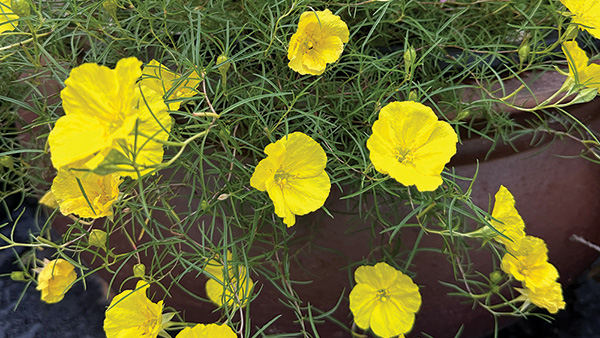
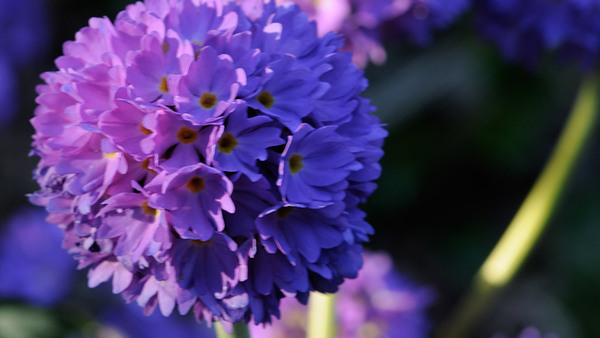
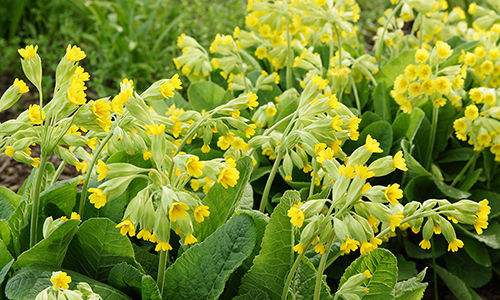
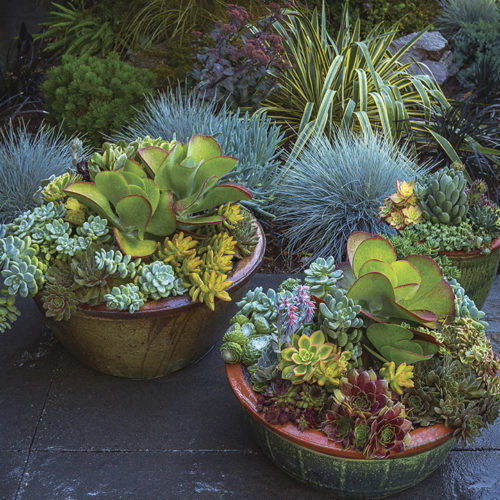













Comments
sad that the walmart pop up blocked out your post. shame
I've always been curious about the Primrose. Had no idea there were so many types and may consider growing some after reading your story.
Log in or create an account to post a comment.
Sign up Log in